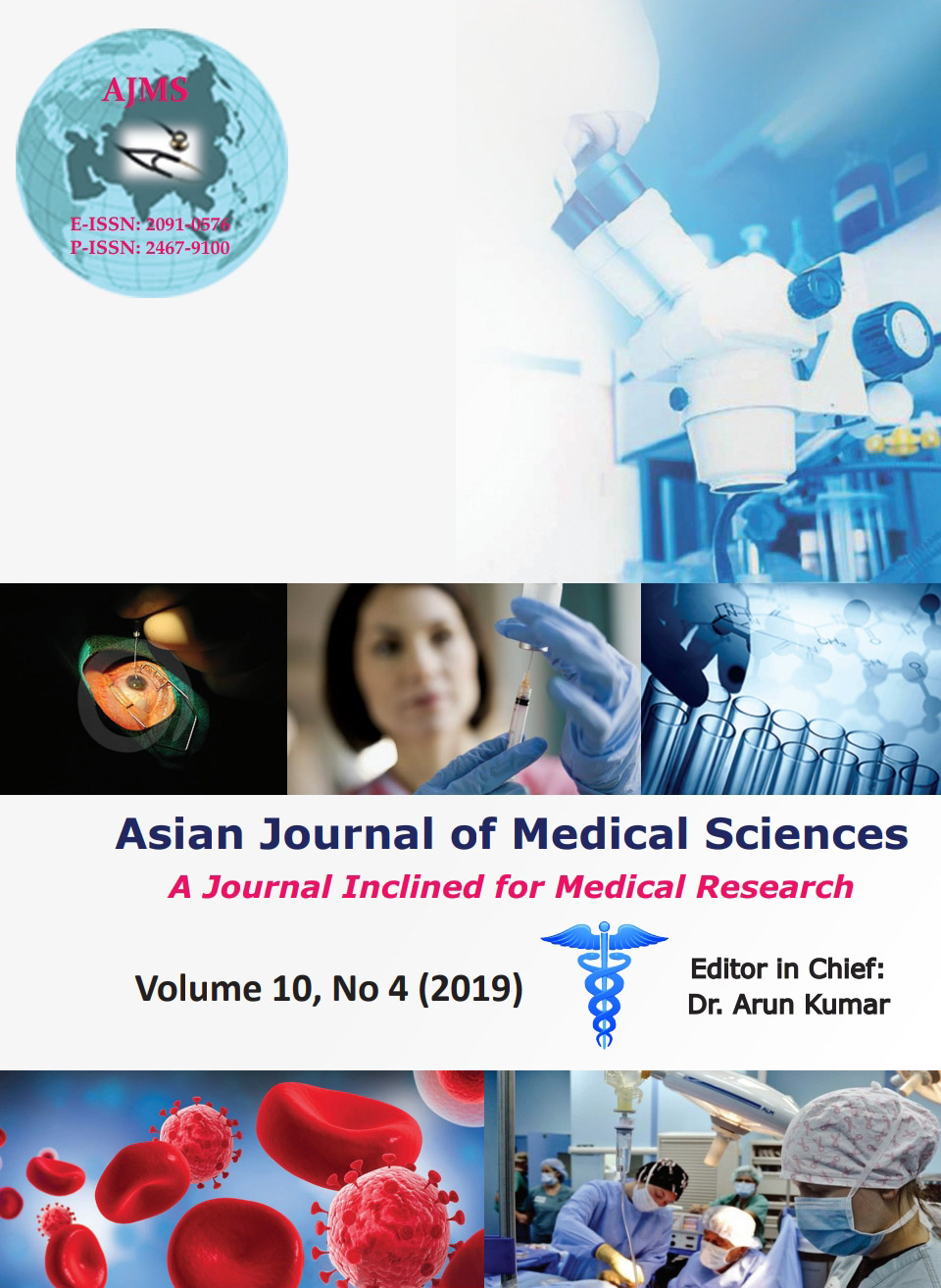Relationship between Anthropometric indices, serum Leptin and Respiratory function in Myanmar male adult subjects
Keywords:
Respiratory Function, Serum Leptin, ObesityAbstract
Background: The role of leptin in respiratory function has been studied in specific respiratory disease. A little is known about the association of serum leptin level and respiratory function parameter in healthy subjects.
Aims and Objectives: This study aimed to investigate the relationship between anthropometric indices, serum leptin and respiratory function in Myanmar male adult subjects
Material and Methods: A community- based cross-sectional comparative study was carried out in 101 apparently healthy male adult subjects of age 18-45 years. All participants were categorized by anthropometric indices into non- obese (body mass index: BMI < 25 Kg/m2 and obese subjects (BMI > 30 Kg/m2). Differences in respiratory function parameter and serum leptin level were compared across the group. Spirobank II spirometer was used to measure respiratory function (FEV1, FVC, FEV1/FVC, PEFR and FEF25-75%). Serum leptin level was investigated by enzyme-linked immunosorbent assay.
Results: The percentage of predicted value of all respiratory function parameters of obese group was significantly lower than that of non-obese group (p <0.05). All respiratory function parameters were significantly and negatively correlated with body mass index (BMI) and waist circumference (WC). Median and interquartile range of serum leptin level in the obese group was 5.8(3.5-9.1) ng/mL and it was significantly higher than that of non-obese group [1.9(1.1-3.1) ng/mL, p <0.001]. Serum leptin level was significantly and negatively correlated with respiratory function parameters (FVC, FEV1/FVC, PEF and FEF25-75%).
Conclusion: Respiratory function declined with increasing anthropometric indices might be due to increased serum leptin level considered as systemic inflammatory effect of body.
Downloads
Downloads
Published
How to Cite
Issue
Section
License
Authors who publish with this journal agree to the following terms:
- The journal holds copyright and publishes the work under a Creative Commons CC-BY-NC license that permits use, distribution and reprduction in any medium, provided the original work is properly cited and is not used for commercial purposes. The journal should be recognised as the original publisher of this work.
- Authors are able to enter into separate, additional contractual arrangements for the non-exclusive distribution of the journal's published version of the work (e.g., post it to an institutional repository or publish it in a book), with an acknowledgement of its initial publication in this journal.
- Authors are permitted and encouraged to post their work online (e.g., in institutional repositories or on their website) prior to and during the submission process, as it can lead to productive exchanges, as well as earlier and greater citation of published work (See The Effect of Open Access).




